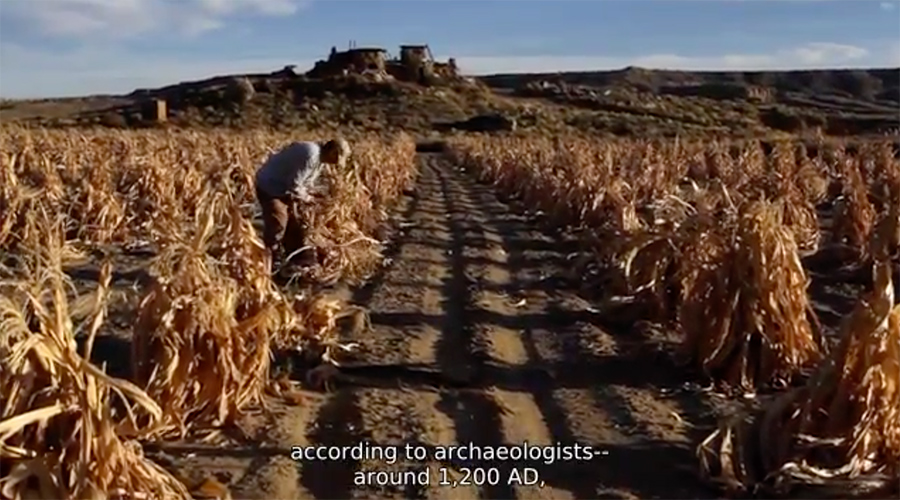“Hopi is the only place I know where corn has grown in such a way to conform to the environment,” explains Hopi dryland farmer Dr. Michael Kotutwa Johnson on his farm in the Arizona desert. “This is unlike Western agriculture which continuously manipulates the environment to fit the corn.”
In this Arizona State Museum video from the exhibition The Resiliency of Hopi Agriculture: 2000 Years of Planting, he provides a tour of his dry farm. There is no human-made irrigation; his crops depend on rainfall alone.
It’s just kind of amazing what we can do in this environment because we only get 6 to 10 inches of rainfall… to be at Hopi, to be a farmer, you have to almost be what they call an agronomist a hydrologist an engineer you have to be a little bit of everything in order to produce crops.
Dr. Johnson started working on this farmland when it belonged to his grandfather:
I used to not like being up, like, the little kids in the morning at 5:30, and coming out here and hoeing weeds, and you know and planting corn. But as I get older the more I love it. And the more educated I get, the more responsibility I have to help people. That’s what I would believe and that’s what my father taught me. And my responsibility right now, since I don’t have children except for my cornfield, is to help other people understand this process.
Our Hopi concepts of resiliency, stewardship, and sharing, combined with the biodiversity of our crops, should be protected, preserved, and learned from. Our Hopi people and our way of life is truly a world heritage treasure.
Michael Kotutwa Johnson has a Ph.D. in natural resource management from the University of Arizona, and now works as a Native American Agricultural Fund research associate.
Watch these related videos next:
• Chief Oshkosh and a history of Menominee Forest conservation
• How can nature be used as a tool to restore ecosystems?
• Growing 500 edible plants in a forest
• The word Indigenous, a CBC Kids News explainer
• The Farm Next Door, a peek at urban farming in Atlanta
Curated, kid-friendly, independently-published. Support this mission by becoming a sustaining member today.




